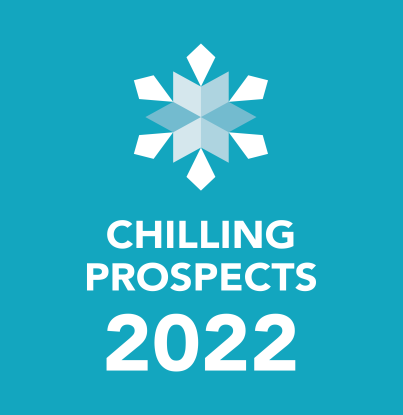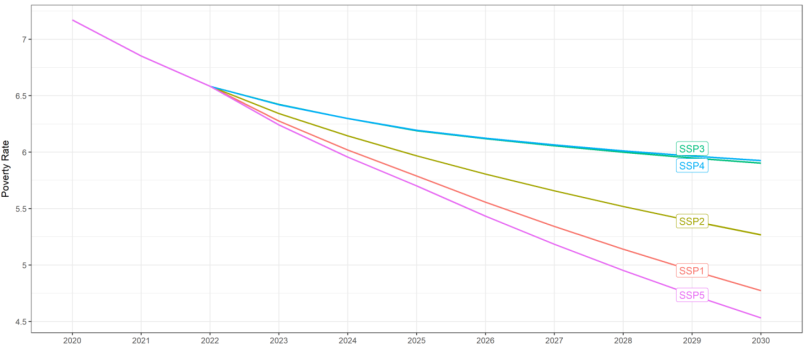Access to cooling and risk scenarios in 2030: Forecasting methodology
|
Chapter 1.7 - Annex |
The factors influencing access to reliable, modern, sustainable cooling solutions are multi-faceted. Chilling Prospects 2022 looks at vulnerability to heat and access to cooling, and identifies four risk profiles: [1]
- Rural poor lack access to electricity and are likely to live in extreme poverty in rural areas. They include subsistence farmers without access to an intact cold chain and those who may lack access to properly stored vaccines.
- Urban poor may have some access to electricity, but are likely to live in poverty and in poor quality housing. They may have a refrigerator, but food often spoils due to intermittent power.
- Lower-middle income may be ready to purchase an affordable cooling device, but purchasing options are limited, causing them to favour more affordable options that are more likely to be inefficient, which could raise energy consumption and greenhouse gas (GHG) emissions. They live on lower-middle-income levels (USD 1.90 to USD 10.00 per day) and have some degree of access to electricity.
- Middle-income typically own an air conditioner and refrigerator and may be able to afford more efficient ones. They may also be able to move to better designed, more efficient built environments, where they might also make conscious choices on the ownership and use of air-conditioning. They live on middle-income levels (USD 10.01 to USD 20.00 per day).
Within these risk profiles, two factors are identified as crucial constraints to access to sustainable cooling: access to electricity and extreme poverty. Combined with other factors such as population growth, urbanization and trends in informal settlements (slums), these factors allow for an estimate of the size of the rural and urban poor population that may not be able to meet their cooling needs, and hence may experience high vulnerability to heat.
Starting from annual tracking data, Chilling Prospects 2022 forecasts global risk due to lack of access to sustainable cooling through 2030. Analysis was carried out in 54 countries that are identified as high impact based on their socioeconomic characteristics and projected climatic conditions. [2] [3] [4] It was also extended to regions with extreme heat hazard in 22 additional countries that are not considered high impact. [5] [6] The forecasts consider three different scenarios.
Current trends scenario
The current trends scenario analyzes how risk related to lack of access to cooling may evolve between 2022 and 2030 if electricity access and reduction of extreme poverty follow trajectories that are in line with current trends in the 76 countries covered by the Chilling Prospects analysis.
Under this scenario, electricity access projections rely on historic trends in urban and rural electricity access rates in each country. Historic trends are compared and adjusted using the International Energy Agency’s (IEA) regional projections of electricity access through 2030 based on the Stated Policies Scenario (STEPS), [7] to better account for the effects of existing or announced policies.
Projected trends in extreme poverty (populations living on USD 1.90 per day or less) are based on the Shared Socioeconomic Pathways 2 (SSP 2) scenario. The SSP 2 scenario assumes that social, economic and technological development in the coming decades continues largely along historical patterns, and it is often used as a benchmark projection linked to climate change mitigation and adaptation scenarios. Compared to other SSP scenarios, the reduction in extreme poverty rates in SSP 2 represent a middle of the road trajectory (Figure A.1), building on the assumption of steeper declines in South and East Asia and the Pacific in 2020–2030, and slower reductions in Sub-Saharan Africa. [8] [9]
Figure 1: Poverty rate projections between 2020 and 2030 by SSP 2 scenario
SDG7.1 scenario
The SDG7.1 scenario analyzes how risk related to lack of access to cooling may be influenced between 2022 and 2030 by accelerated rural and urban electrification in line with SDG7.1.
Under the current trends scenario, 26 high-impact countries appear on track to achieve near-universal (98 percent or higher) access to electricity in urban areas by 2030, and 18 high-impact countries appear on track to do so in rural areas. The SDG7.1. scenario projects faster electrification rates between 2022 and 2030, so that all countries reach 100 percent access to electricity in both urban and rural areas by 2030.
The SDG7.1 scenario focuses on the effects of access to electricity and assumes that extreme poverty follows current trends through 2030. In reality, increasing access to electricity and poverty reduction are often interlinked and do not progress in isolation. By focusing on electricity access, this scenario does not intend to delineate a possible pathway, but rather examines the effect of electricity access on the size of the population that may be at risk due to lack of access to cooling in 2030.
At the same time, although connection to electricity supply is a necessary condition to operate cooling appliances, it often does not suffice to ensure modern energy consumption levels. Issues of quality, reliability and affordability of electricity supply influence the ability to effectively meet cooling needs through active cooling solutions. This scenario highlights, to some extent, the remaining poverty-related constraints in settings where electricity supply is available. Further analysis is needed to investigate ownership of cooling appliances within the various risk profiles, considering different tiers of electricity access and income segments beyond extreme poverty. This would allow to further qualify the vulnerability that populations may face, as well as the impact of growing access to cooling on energy demand and GHG emissions. Finally, it is worth noting that passive cooling solutions can effectively reduce exposure and risk even for low-income populations with limited access to electricity.
SDG7.1 and SDG1.1 scenario
The SDG7.1 and SDG1.1 scenario analyzes how risk related to lack of access to cooling may evolve if universal access to electricity is achieved and, at the same time, extreme poverty is reduced to 3 percent of the population or less in each country by 2030.
Under the current trends scenario, 21 of the 54 high-impact countries appear on track to achieve poverty reductions in line with SDG1.1 by 2030, while as many as 24 countries are projected to miss this target by more than 10 percentage points. Under this scenario, electricity access follows the same projections as in the SDG7.1 scenario. In addition, this scenario projects a reduction in the share of people living in extreme poverty (on USD 1.90 per day or less) to 3 percent of the population or less by 2030 in all 76 countries covered by the Chilling Prospects analysis.
The SDG7.1 and SDG1.1 scenario intends to show the combined effect of reducing extreme poverty and electricity access gaps on lack of access to cooling and its associated risks. It also brings to the surface the effects of other factors — such as informal settlements — for the poorest segments of the urban population as captured by SDG11.1 – that, if unaddressed, may continue to drive vulnerability in 2030 even though electricity access and income improve.
Finally, all scenarios rely on business-as-usual or middle projections for other factors. Population and urbanization trends in all scenarios follow medium variant trajectories. [10] This also forms the basis for a projection of the urban population living in slums based on historic trends in the 76 countries covered by the Chilling Prospects analysis. Forecasts of the evolution of slums population until 2030 are scarce. However, Sustainable Energy for All (SEforALL) estimates for high-impact countries appear consistent with the findings of recent reports on the global progress towards SDG11.1. [11]
Finally, the share of lower-middle- and middle-income populations (i.e., people living on USD 10 and USD 20 per day or less, respectively) follow a middle of the road projection, based on the results of the SSP 2, [12] [13] and adjusted to account for recent estimates of increase in populations living in poverty as a result of the COVID-19 pandemic.
As electricity access and income grow, and ownership of cooling appliances increases, further analysis will be necessary to better understand the spectrum of cooling solutions that are accessible to populations at risk, and their potential impact on energy and climate goals. In this regard, Chilling Prospects 2022 lays the foundation for further analysis of the interlinkages between access to cooling trends and SDG7.1 (including the quality of electricity access), SDG7.2 (substantially increasing the share of renewable energy by 2030), SDG7.3 (doubling of energy efficiency by 2030) and SDG13 (climate action).



